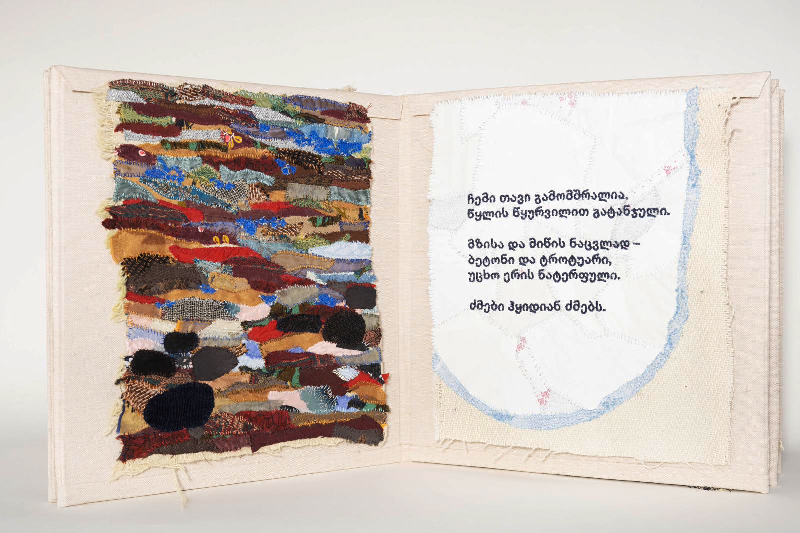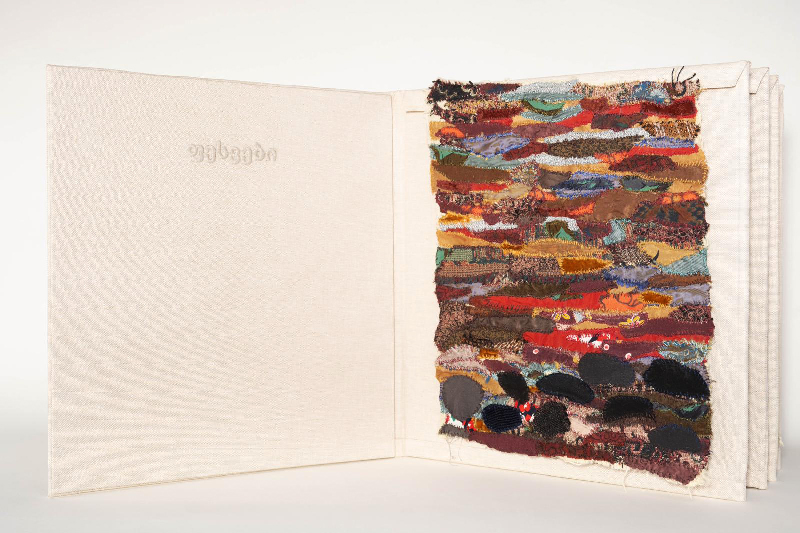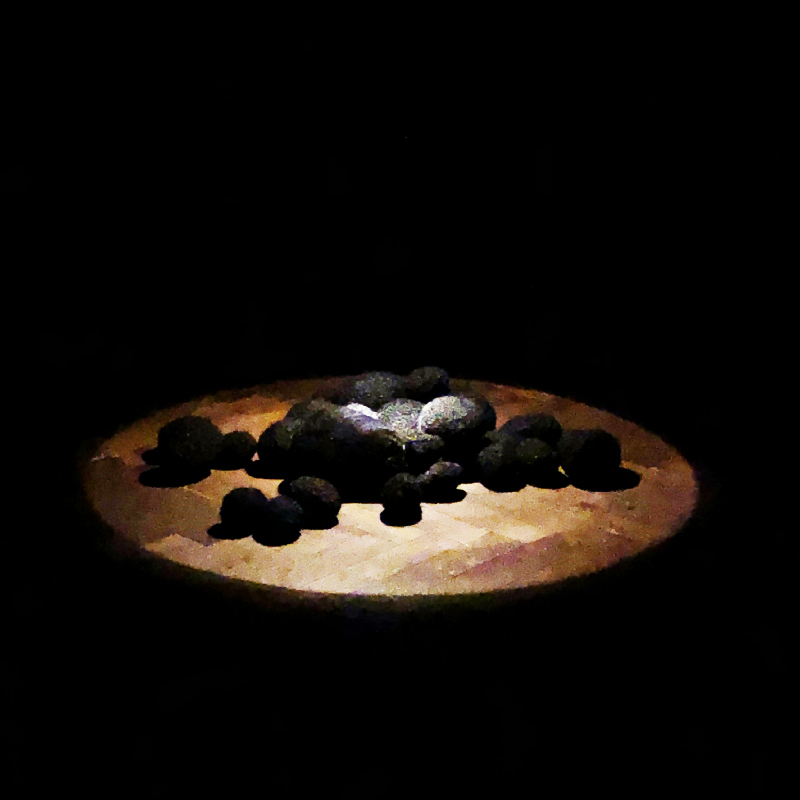
Le Radici sono Importanti- Roots are Important- exhibition by Jonatan E. Jurkowski
This exhibition by a young artist, who won a prize at the last Young Textile Art Triennial (YTAT) was held at the Book Art Museum in Lodz, a museum co-runned by the Ministry of Culture and privat foundation, in an old villa that still has the charme of Lodz how it was when I first visited it in the 80s. The artist has worked here for six years and even had his „atelier“ on the attic of a neighbouring building where he also made the prize-winning works „Mandorla for Earth and Heaven“ and „Mandorla for Heaven and Earth“, a hommage to three of his relatives he lost during the pandemic. The first work was a boat made from natural twigs wrapped with black threads as a symbolic boat crossing the river separating the living from the death in the Greek underworld. The second work has a knitted black paper background embroidered with black sisal, jute and different materials, making it looking heavier than it really is.
In this exhibition the paper-knitted work was acompanied by two large white works in the same technique but in white. „Lazarus“ and „Harranu isi“ are about the returning to life of the artist. In his own words: Losing three people brought me to a point where I thought I might never recover, but creating these pieces made me realize I’m still alive, I still have something to say, and that’s why the first piece I made after that black one was white, because I’ve somehow processed the thoughts of death and decided it’s important to return to life.
In contrast to the Lodz Triennial, where every work had a written explanation that often seemed more important than the works itself, here there were only the titles of the works available on an extra leaflet, this way the artist want us to look at the works itself and let them speak. Every visitor may have noticed the spiritual atmosphere and the often Christian symbols but the visitors did not exactly get to the meaning of each work; some asked are the black work with the two white ones about Christ and two white sinners, why is Christ in black ? There were more hints at Calvary in the „Trees Without Roots“ cycle, where the artist is again refering again to his lost relatives.
Also many of his other works were spiritual, like the „Granum Orans“, a woven work with beads like rosaries made of rose pedals, and the work made of rope covered in Korean silk called „Oreuda“ about a Koren legend about two children who climb up the ropes to become the sun and the moon. Those two vertical works are like prayers for the artist, who hopes that visitors will feel the uplifting spirit, supported in this case by the scent of rose petals. Both works I have seen in the making, in Korea during our participation in the Silk Residency, initiated by Chungie Lee (whom he got to know during the ETN conference in Lodz in 2023). Later the making of the beads from real rose petals (like rosaries originally were made) during our talks on video phone. In both cases it was a struggle with time and physical forces, in Korea also our dear teacher Gahpran Kim helped wrapping the ropes and for the rosary beads the artists mother was sharing the time-consuming work of making each bead with rose clay, than dry them and make a hole in them.
The first political work the artist made in March 2025 during his stay for his PhD at the Silk Museum in Tbilisi, where he participated in the daily protests that are still going on in Georgia. The title of the work is „Pesvebi“ meaning roots, and it is based on a poem he wrote about Georgian culture that has so deep roots that even if you cut the plants above ground, there will always come new live from the roots. This work is made of several hand embroideries where the rich Georgian culture is symbolized as colourful roots covered by stones, and sprouting in spite of all adversities. Together these embroideries are made into a textile book with the poem in Georgian text embroidered letter by letter with the assistance of an embroidery machine.
A further textile work are the black stones made of old textiles, mainly made from old clothes. This work was placed in an empty room, completly dark with spotlight on the stones and music composed extra for this ocasion by a colleague from the Book Art Museum. The biblic title „Who casts the first stone shall not strike their foot against it“ indicates again his Christian upbringing, in the artists own words: it combines two biblical quotes: one from the Psalms, from the Old Testament, and the other from the New Testament, related to the story of the stoning of Mary Magdalene. These stones, these textile objects, come together as one, and their weight varies so that you can notice how even a stone that seems identical can have a different weight, just like our problems or burdens.This work is ongoing and planned to be much larger in the end.
This exhibition had everything that was missing in the Lodz Textile Triennial I had just witnessed, here it was all about textile art, all made by hand, no fashionable topics, and exhibited in the magical sphere of an old villa that had survived the time. The old building and the old-fashioned textile techniques the artist is using, matched wonderful together in unexpected way. The whole event had a very uplifting effect on me, even if it was not perfect, or maybe because it was not perfect? A catalogue made at the Book Art Museum is planned to be published early in 2026.
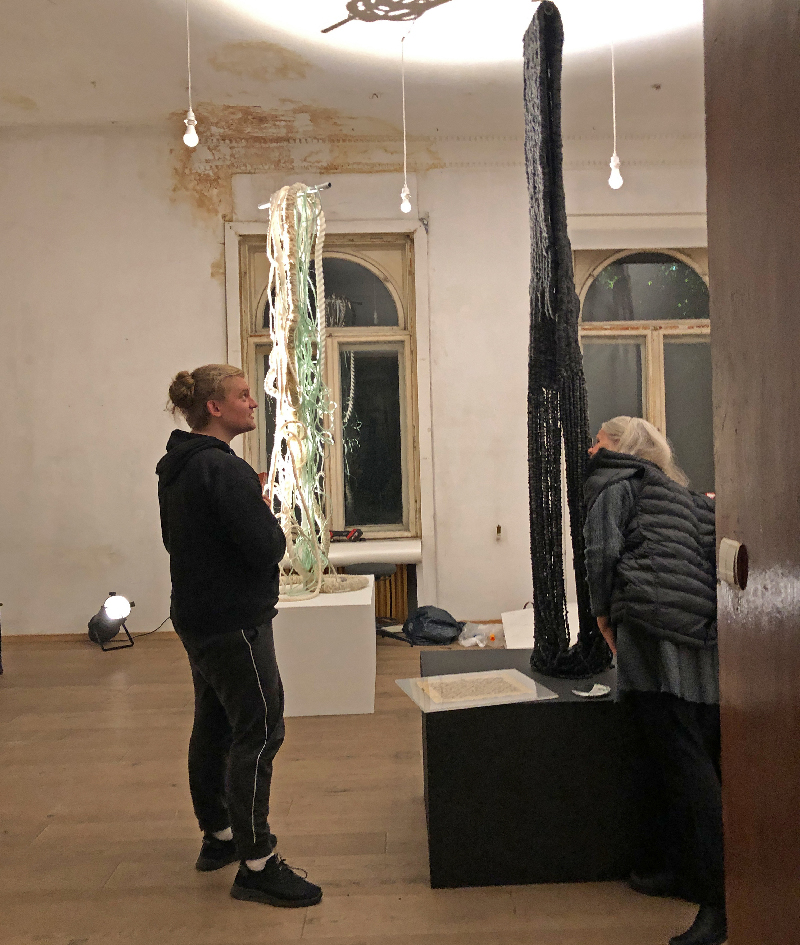

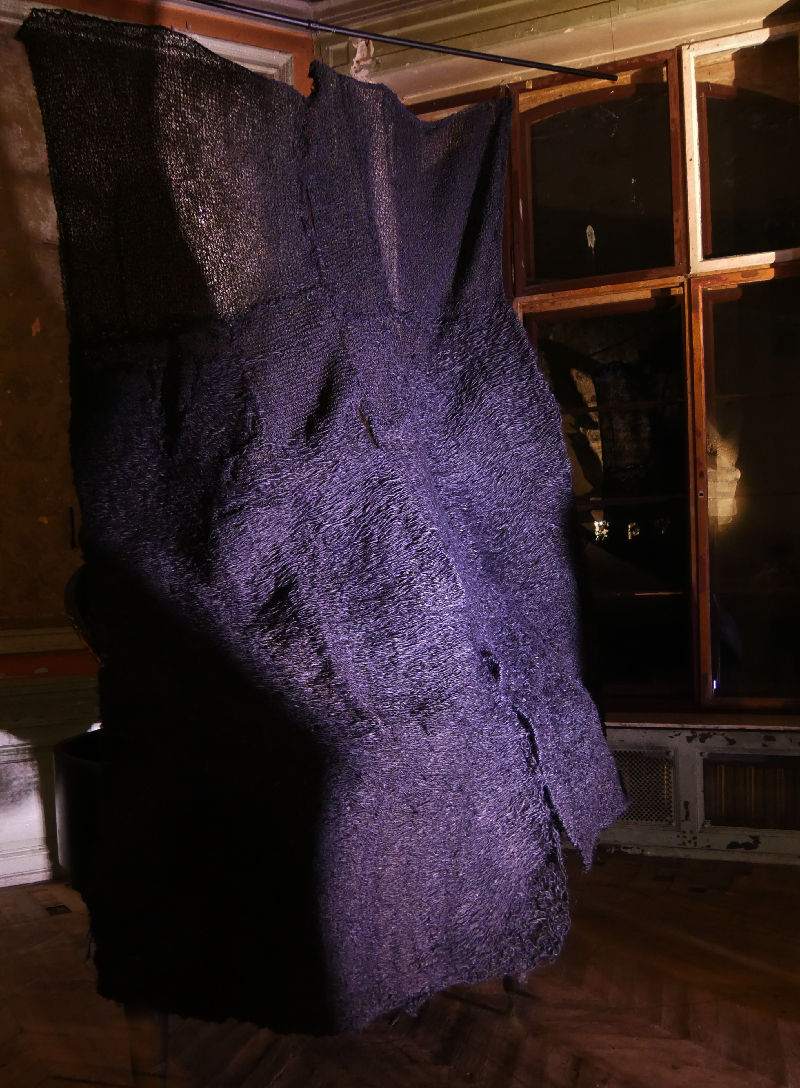
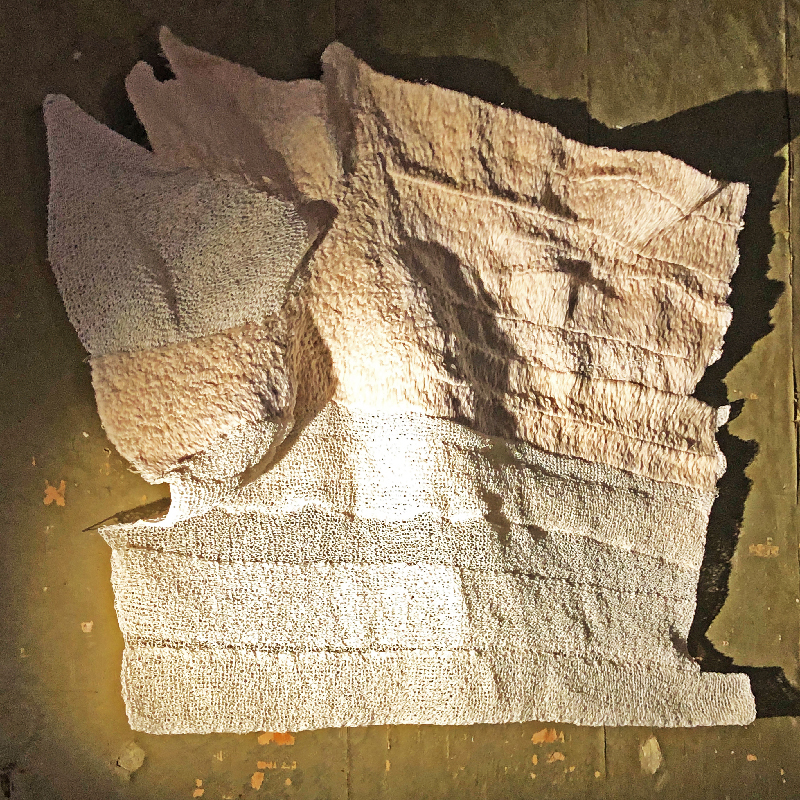
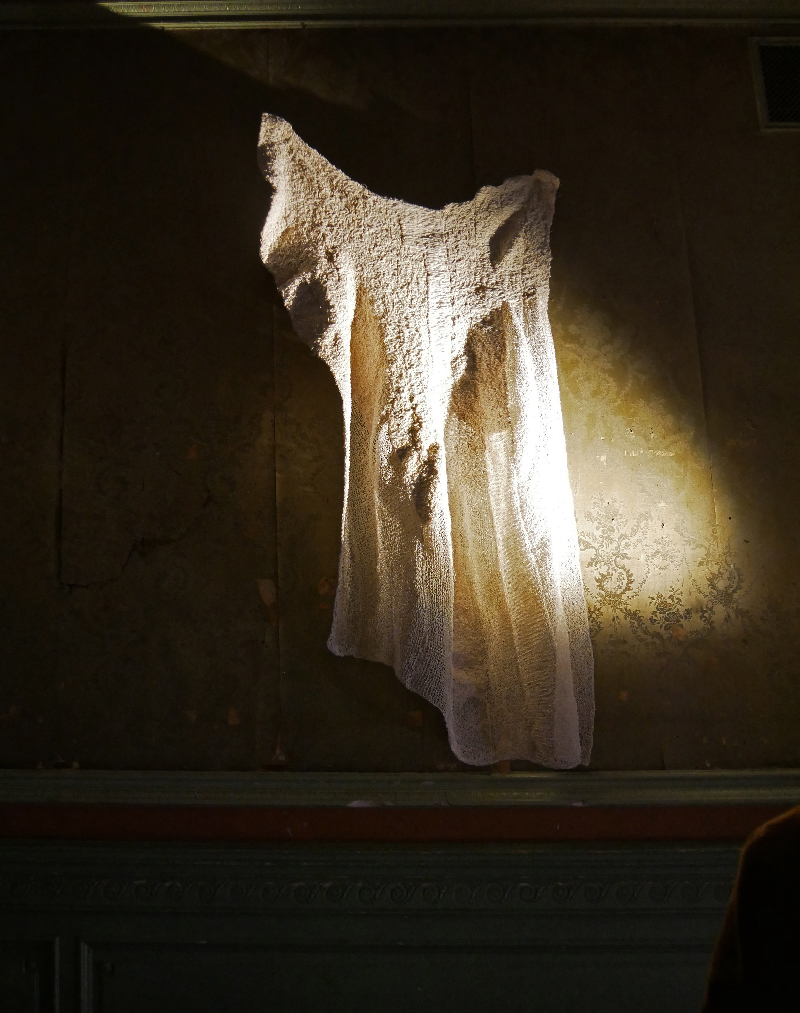
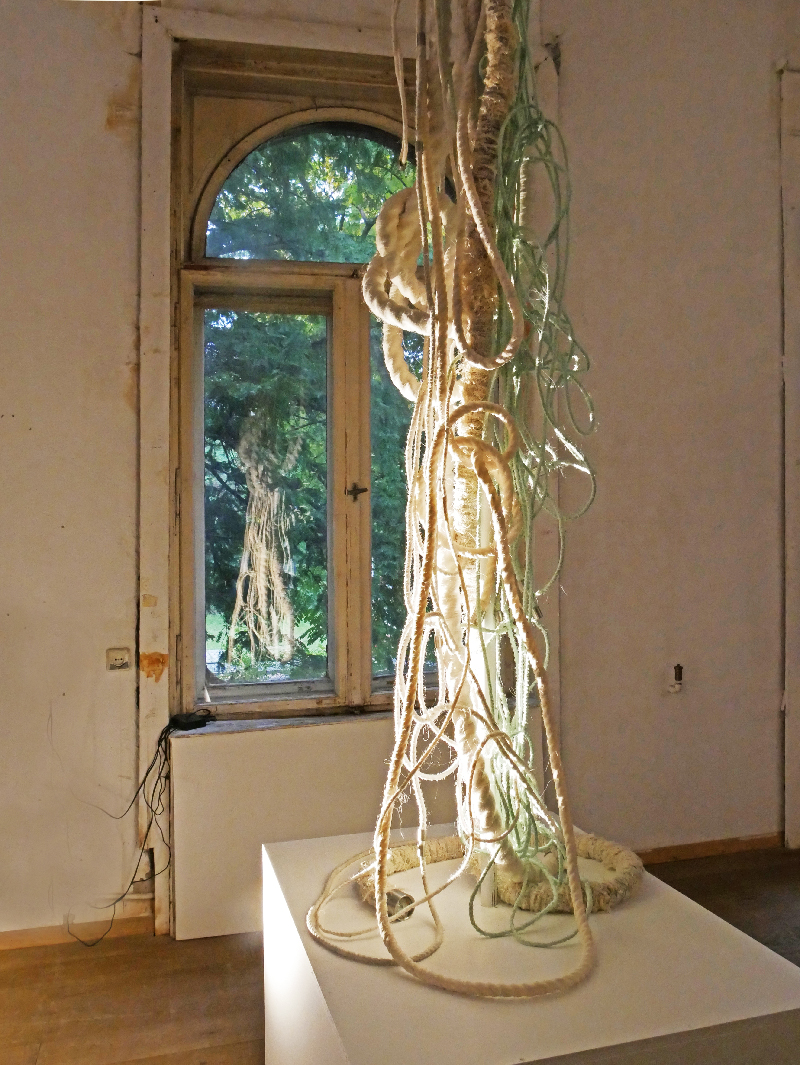
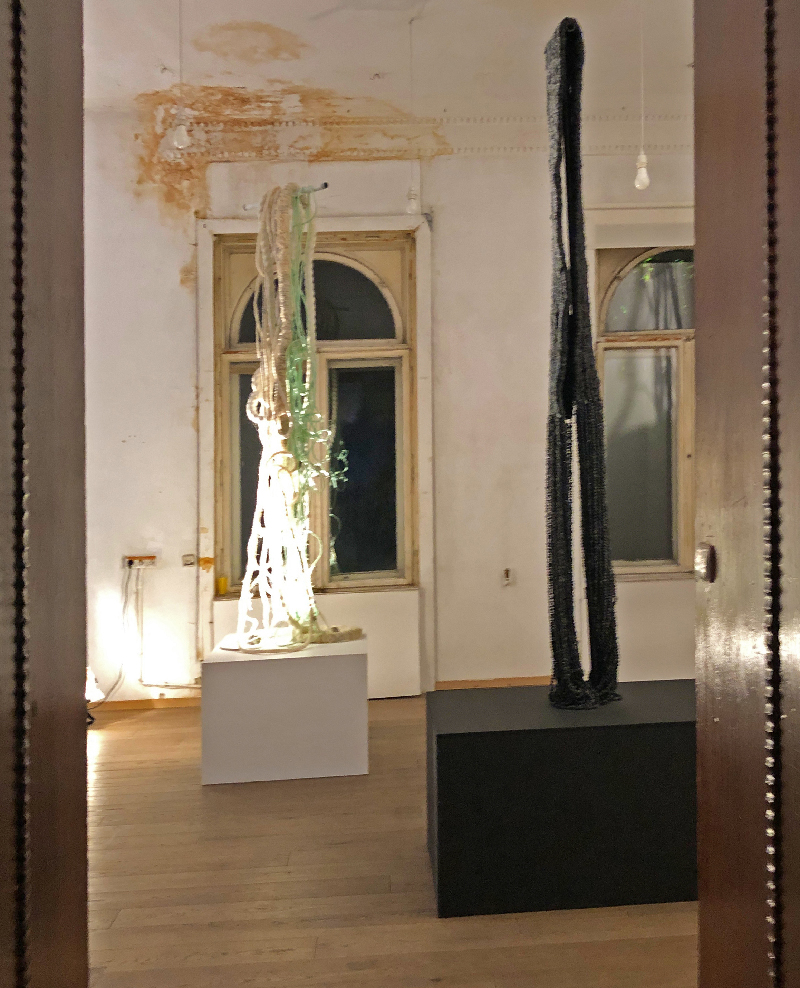
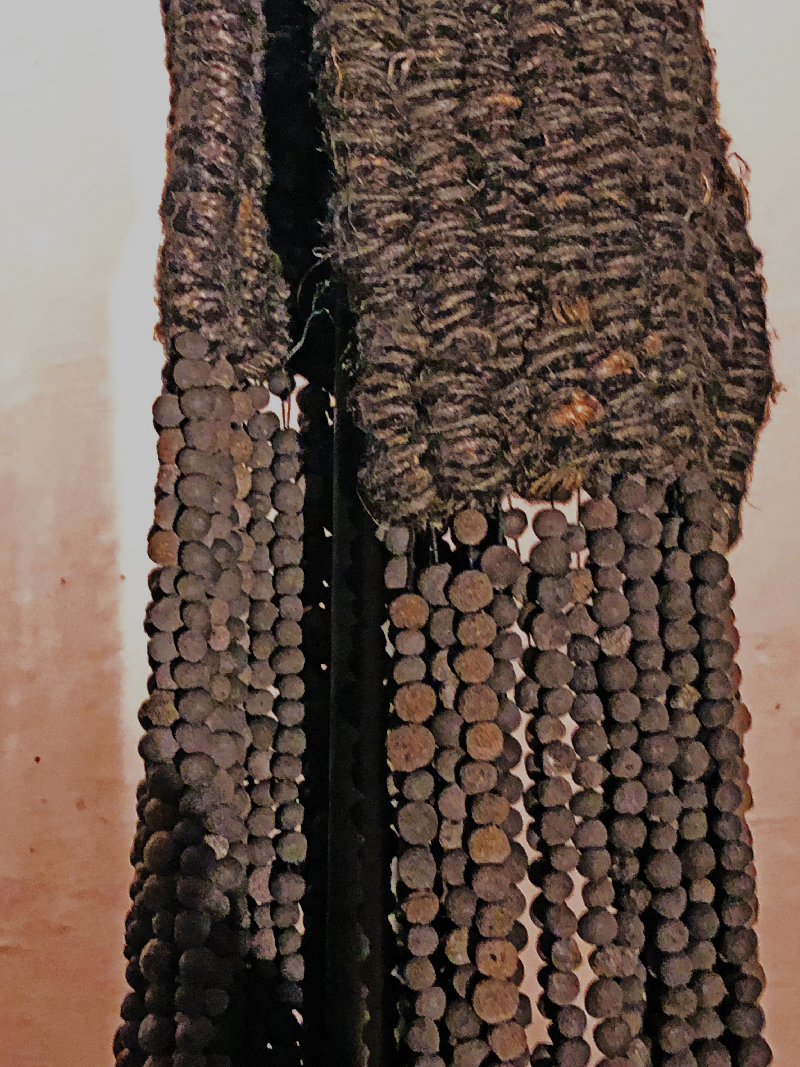
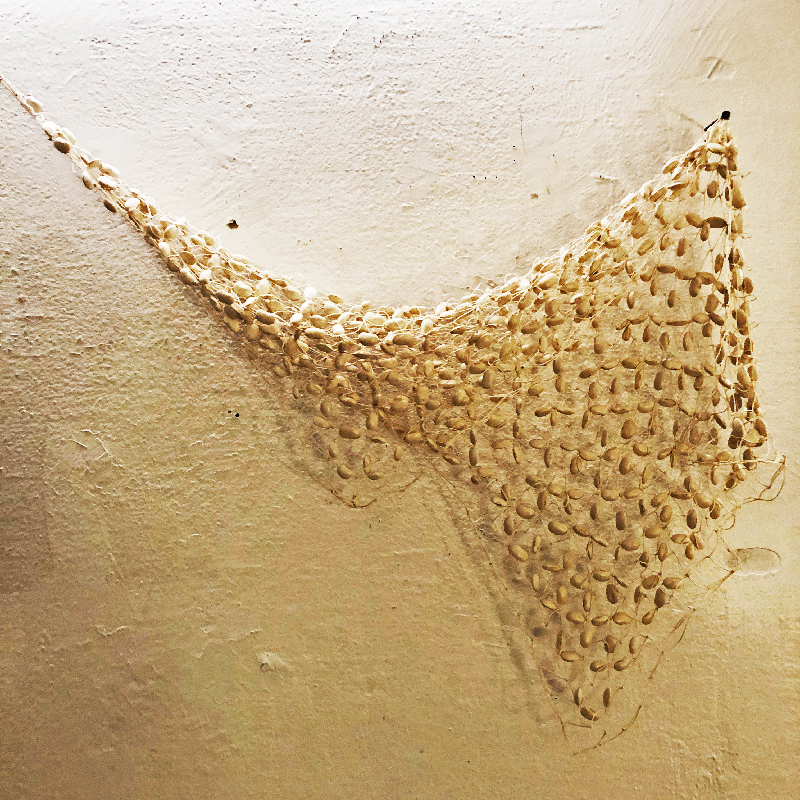
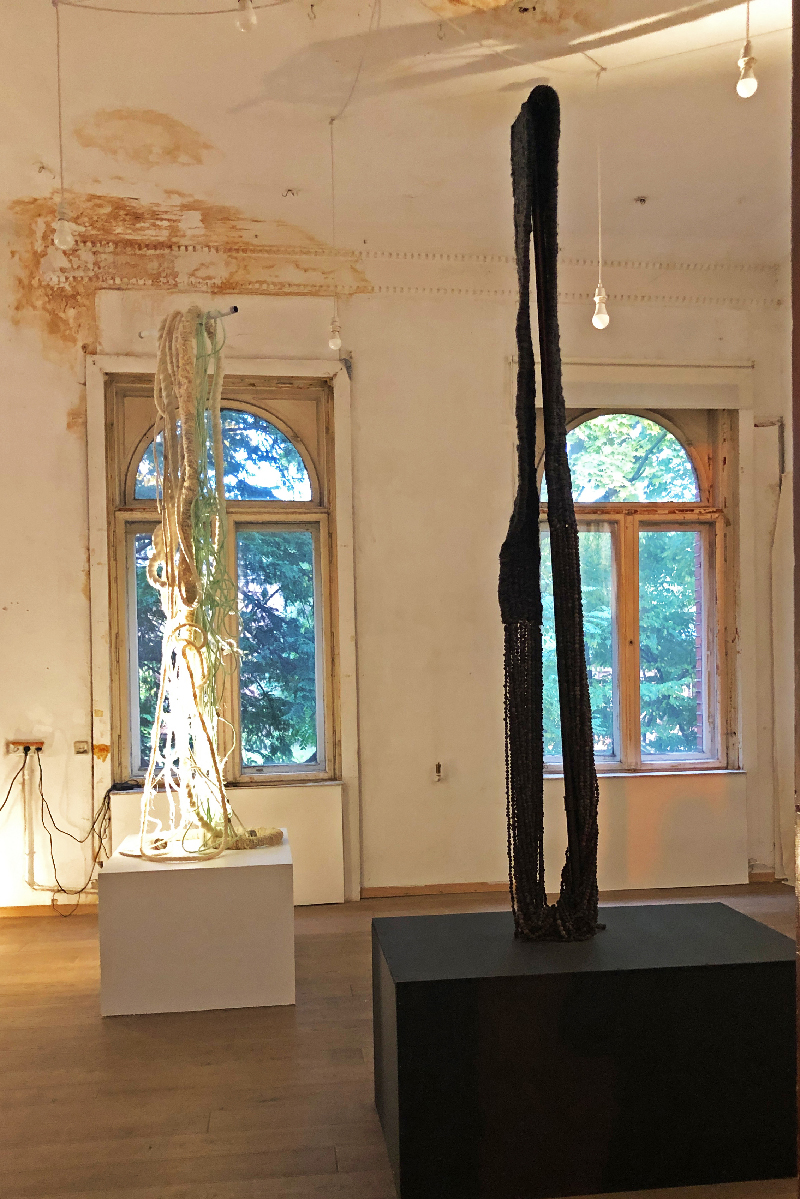
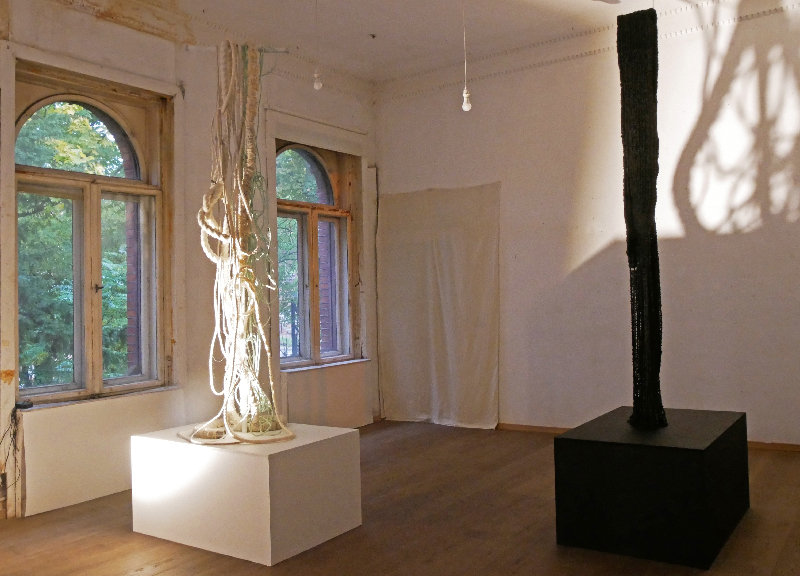
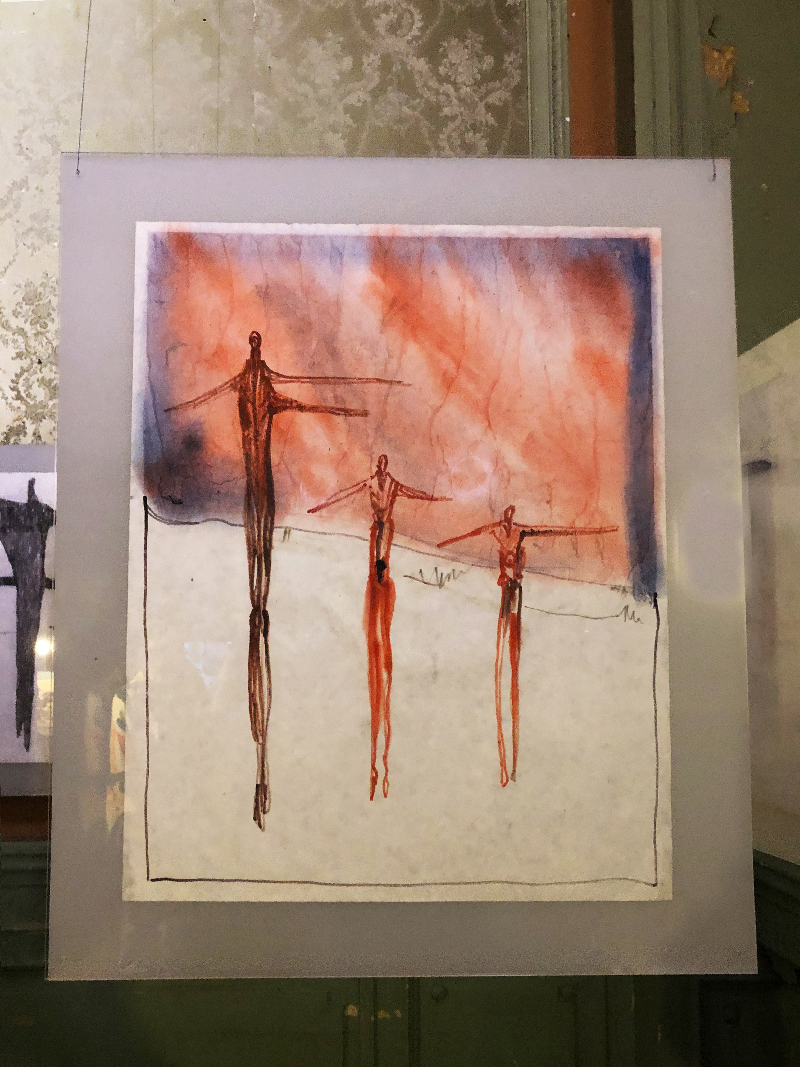
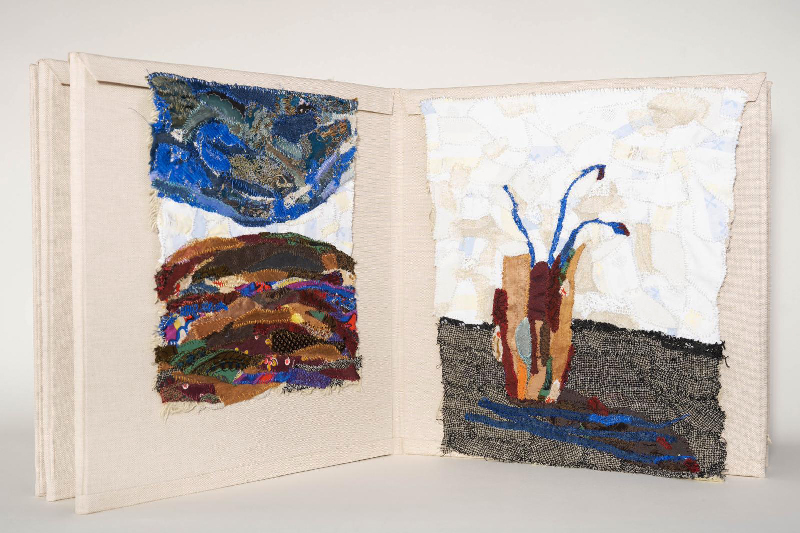

Jonatan.E.Jurkowski: „Pesvebi (Roots)“,2025, a textile book in embroidery technique about the situation in Georgia, a country that has such a strong culture that it cannot be suppressed, the colorful roots will stay alive; photo Katarzyna Reszka
